It is a type of farming that uses water and light instead of soil to grow plants. It is one of the most popular agriculture sectors because it’s both sustainable and efficient. Hydroponics farming in South Africa has grown commercially over the years and is currently dominating the agricultural sector. Hydroponic farming in SA has proven to farmers and investors that it can produce more than its market value while maintaining minimal risks.
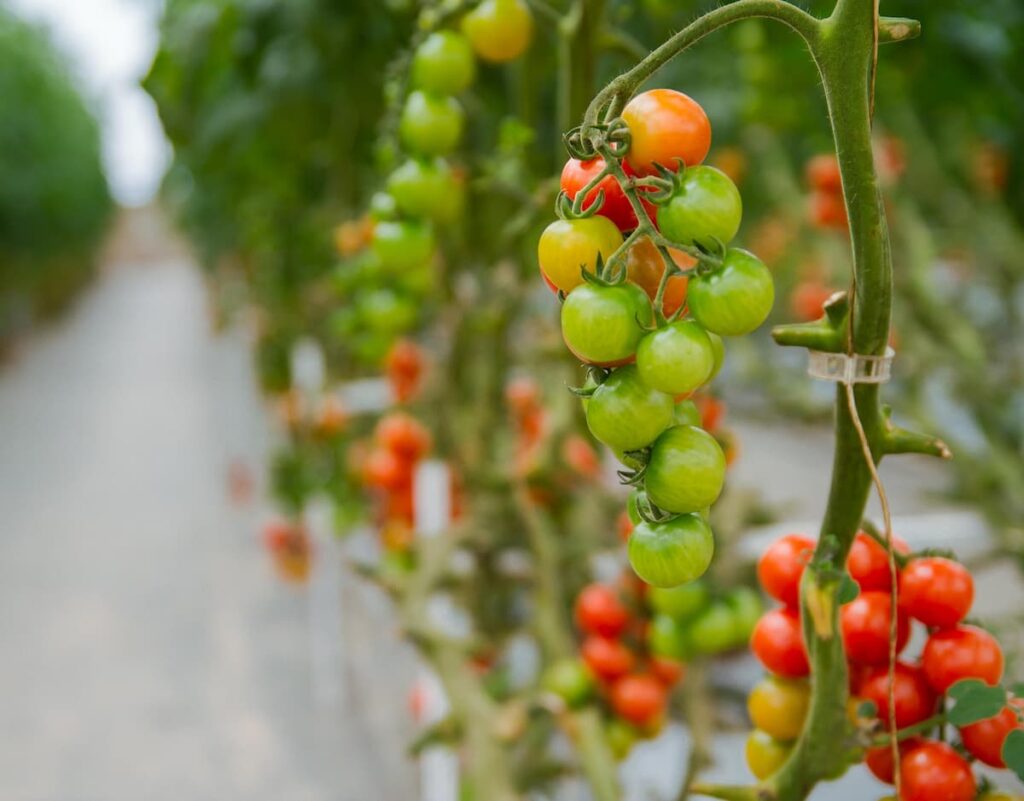
Hydroponic Farming in South Africa
What is hydroponic farming?
Hydroponic farming is a method of agriculture in which plants are grown in water instead of soil. This method allows for greater production of crops using less land, water, and fertilizer than traditional farming methods. In addition, the roots of the plants are not exposed to the environment, which allows for higher yields and healthier plants.
Advantages of hydroponic farming in South Africa
- It is a type of agriculture that uses water and nutrients to grow plants in a controlled environment. This method has many advantages over traditional methods, including reduced use of pesticides and fertilizer, increased crop yields, and less waste.
- One of the major benefits of hydroponic farming is that it reduces the use of pesticides and fertilizers. Pesticides are harmful chemicals that are used to kill or control pests. They can have negative effects on both humans and the environment. Fertilizers are also harmful chemicals used to increase crops’ growth rates. Again, they can also negatively affect humans and the environment.
- Hydroponic farming also increases crop yields. Hydroponic farming eliminates this problem by using less land and water per production unit. This makes it more efficient for farmers to produce food.
- Lastly, hydroponic farming produces less waste than traditional farming methods. With traditional farming, farmers must replant and harvest every crop they grow to obtain maximum output from their land.
Requirements of hydroponic farming in South Africa
- Hydroponic farming is becoming more popular in South Africa as it is an environmentally-friendly way of producing crops. The conditions for hydroponic farming in South Africa are the same as for any other type of farming – good soil and water, sunlight, and fertilizer.
- The first requirement for hydroponic farming is good soil. Good soil contains enough nutrients to support plant growth and should be fertile, heavy, and low pH. Hydroponic farmers can use organic or synthetic fertilizers to enrich the soil.
- The second requirement for hydroponic farming is adequate water supply. Hydroponic systems require high humidity levels, so water supply is important to prevent the plants from drying out. Additionally, water quality needs to be consistent so that the plants receive the proper nutrients and minerals. Hydroponic farmers can use solariums or greenhouses to provide supplemental water or create underground reservoirs to store rainwater.
- Sunlight is also necessary for hydroponic crops. Sunlight helps convert light into energy which can help plants grow.
In case you missed it: How to Get Hydroponic Farming Subsidy: Up to 50%, and License to Start
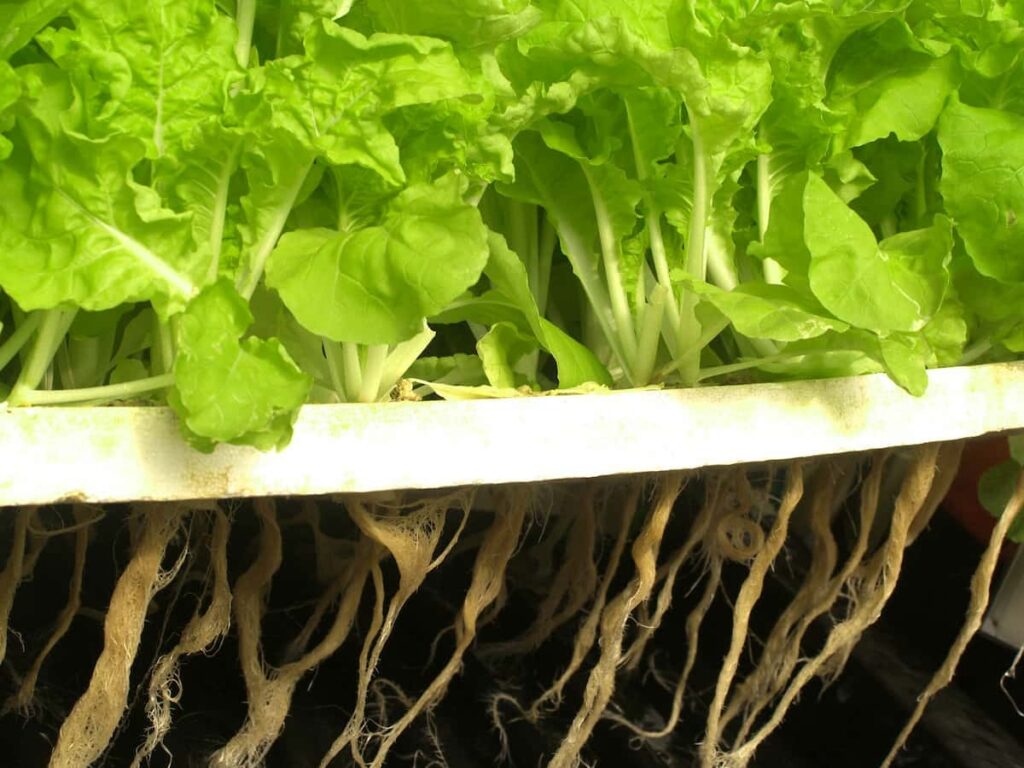
Hydroponic farming business plan in South Africa
Hydroponic systems require no soil or water, meaning they are efficient and sustainable. In addition, they can cultivate various plants, including vegetables, fruits, and flowers. When starting a hydroponic farming business in South Africa, it’s essential to identify your target market. This can be done through market research or by studying what other farmers in your region are doing.
Once you’ve identified your target market, you must develop a marketing strategy to attract them to your farm. One way to do this is by developing promotional materials such as brochures and website content that target your target market. In addition, it’s important to have a strong product line that meets the needs of your target market.
Finally, you’ll need to invest in equipment and supplies such as growing containers and irrigation systems to do this. Once you have developed a marketing strategy and established yourself as a credible player in your regional marketplace, it’s time to start generating revenue from your farm. One way to do this is by charging customers for access to your crops or products
What are the crops suitable for hydroponics in SA
- Many different types of crops can be grown using hydroponic methods. Some examples include tomatoes, peppers, cucumbers, lettuce, herbs, flowers, fruits such as bananas and citrus fruits, beans and peas varieties such as lima beans and garbanzo beans, etc. In addition, any fruit or vegetable grown in soil can be grown using hydroponics, provided the conditions are met.
- Hydroponics can grow various crops, including vegetables, fruits, and flowers. The plants are grown in containers filled with water and a nutrient solution in hydroponic farming. This system allows the farmer to control the environment where the plants grow, making it an ideal option for farmers with limited space or who want to produce specialty crops.
- Depending on the region, many crops are suitable for hydroponic farming in South Africa. For example, in the Cape Town area, cannabis can be grown using hydroponics and Tomatoes and Cucumbers. In addition, hydroponic vegetables are becoming increasingly popular in South Africa due to their high yields and resistance to disease and pests.
- Some crops not typically grown in soils can also be grown using hydroponics if the right technology is applied. These include Lettuce, Chilies, Strawberries, and Grapes. The key difference with these crops is that they need a different watering system than other vegetables or fruit trees. For example, lettuce needs high humidity levels to grow well, while chilies need intensive dry periods to prevent them from flowering too early and producing fruit with low yields. Likewise, strawberries and grapes need high humidity and consistent temperature to thrive.
Hydroponic farm startup cost South Africa
- Hydroponic farms can be found worldwide, but they are particularly prevalent in countries with a warm climates and ample sunlight.
- In South Africa, hydroponic farming is still relatively new, but it is growing in popularity. The startup cost of a hydroponic farm varies depending on the farm’s size and the project’s specific needs, but on average, it takes about $30,000 to get started.
- One significant advantage of hydroponic farming is that it can produce crops year-round. In traditional agriculture, fields are typically used for crop production for only a few months each year. This limits the variety and quantity of crops grown and the amount of food produced per unit area.
In case you missed it: Earning Up to 3 Crores Per Year from Soilless Farming: A Success Story of a Hydroponic Farmer in India
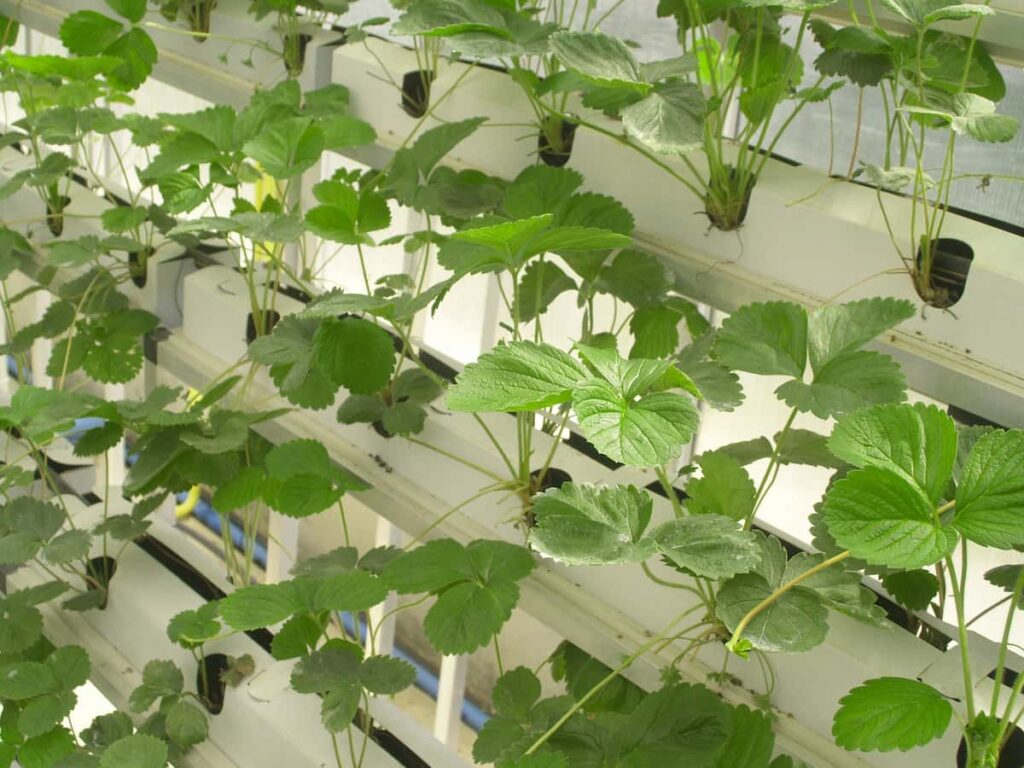
Different types of hydroponic systems in South Africa
Hydroponic systems can be used for growing crops indoors or outdoors, and they are becoming more popular because they are efficient and sustainable. There are three types of hydroponic systems:
- Conventional hydroponic farming involves planting seeds in pots and nurturing them with water and nutrients until they reach maturity. This system usually grows leafy vegetables, flowers, and fruits.
- Integrated hydroponic farming takes advantage of the natural environment around a plant. The system uses gravity and sunlight to help the plants grow, and it can be used to produce both food crops and ornamental plants. Integrated systems are often used to grow crops such as tomatoes, peppers, lettuce, herbs, fruits, and nuts.
- Deep water culture (DWC) is an integrated hydroponic system that uses large buckets filled with water to provide plants with nutrients and moisture. DWC systems are often used to grow leafy vegetables such as lettuce or spinach in commercial settings.
- Aquaponic farming uses fish tanks to recycle wastewater into nutrient-rich aquaculture media for growing vegetables and fruits indoors. This system is popular because it eliminates the need for pesticides or other agricultural inputs, provides high yields, and requires relatively low startup costs.
Commercial hydroponic farming in South Africa
Hydroponic farming has become increasingly popular in South Africa due to its ability to provide high yields with minimal inputs, making it an ideal option for small-scale farmers. Commercial hydroponic farming in South Africa takes place at two main scales: large-scale greenhouses and small-scale irrigation systems.
- At the large-scale level, hydroponic farms can grow Tomatoes, Cucumbers, Lettuce, and other crops. These farms typically use controlled environmental chambers (CCTs) or radiant heating systems to ensure optimal conditions for plant growth.
- Small-scale irrigation systems are used by farmers who want to grow to produce on a smaller scale. These systems allow farmers to grow to produce in open fields or on terraces above ground level. Irrigation systems using recycled water and rainwater have become increasingly popular in South Africa due to their low cost and sustainability.
Hydroponic farming challenges in South Africa
- Hydroponic farming is a growing trend in South Africa, where the climate is perfect for this form of agriculture. However, some challenges must be faced when attempting to produce crops in South Africa hydroponically.
- Common challenges with Hydroponic farming in South Africa include water availability, soil quality, prevailing winds, and temperature fluctuations. Regarding water availability, hydroponic farmers must often adapt their planting schedule to account for rainfall patterns. In addition, they need to find ways to conserve water while still producing a yield. Soil quality also needs to be taken into account when trying to establish a successful hydroponic farm. Unfortunately, South Africa’s soils are often not ideal for hydroponics because of their high clay content or low pH levels.
- Consequently, proper soil preparation is essential for success. Another challenge that frequently arises when attempting to establish a successful hydroponic farm in South Africa is the prevailing winds. These winds can cause significant damage to plants if not properly accounted for during the construction and operation of the farm. Finally, temperature fluctuations can also be problematic for hydroponic crops in South Africa. During winter, temperatures can fall below freezing point, seriously damaging plants.
In case you missed it: Home Hydroponic Farming for Beginners: Check How This Guide Helps to Start and Set up Soilless Garden from Scratch
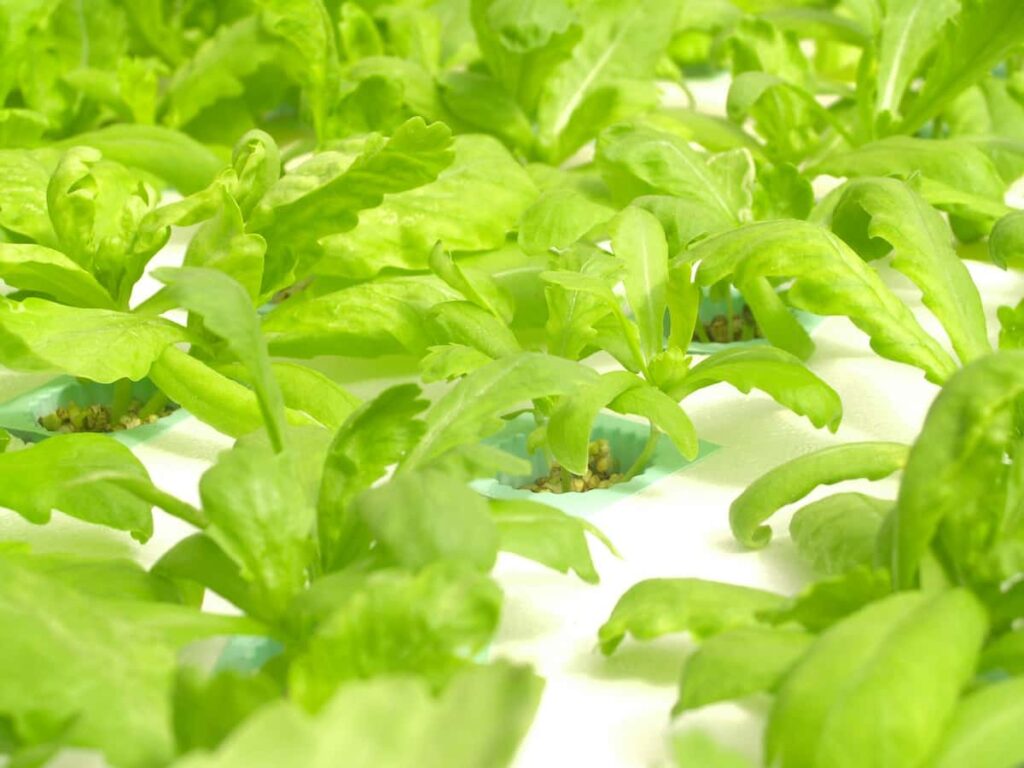
Hydroponic vegetable production in South Africa
- Hydroponic vegetable production is a popular and sustainable way to produce crops without the use of soil. Instead, the system plants in water and receives nutrients and oxygen from the air. This method is becoming more popular in South Africa because it allows farmers to produce high-quality vegetables without using water or pesticides.
- In hydroponic farming, plants are grown in trays or boxes filled with nutrient-rich water. As a result, the system can have a wide variety of vegetables, including leafy greens, herbs, fruits, and nuts.
- Hydroponic farming does not rely on soil nutrients; plants extract these nutrients from the water. This minimizes the need for fertilizer and other agricultural chemicals, which can negatively affect the environment and human health.
- Hydroponics has become increasingly popular in South Africa as it allows farmers to produce high-quality vegetables without relying on large amounts of water or pesticides.
Choose the right hydroponics media in South Africa
Hydroponic farming is a great way to get your vegetables without using soil. It is more efficient and easier to control the growing environment than traditional agriculture. One of the options you have when choosing a hydroponic system in South Africa is the type of media used. Three common types of media are used in hydroponic farming: Clay, Rockwool, and Fiberglass.
Clay is the most popular choice because it retains water well and provides good drainage. Rockwool is less popular because it can be expensive, but it is denser than clay and helps with insulation. Fiberglass is rarely used in hydroponics because it doesn’t hold water well and can be challenging to clean.
Hydroponic farming subsidy in South Africa
- In South Africa, hydroponic farming is being increasingly adopted by smallholders who want to enlarge their production capacity without investing in land or purchasing expensive equipment. The technology has also proved beneficial to large commercial producers who want to reduce their dependence on external inputs such as fertilizers and pesticides.
- The government subsidizes hydroponic farming to encourage the growth of this sector. The subsidy is based on the size of the farm and is payable at 55% of the price paid for inputs. In addition, other benefits are associated with hydroponic farming, such as reduced pesticide use and improved crop yields.
- This type of agriculture is becoming more popular in South Africa as it is environmentally sustainable, fertile, and provides consistent yields year-round.
- To get a subsidy for setting up a hydroponic farm in South Africa, you first need to apply to the Department of Environmental Affairs (DEA). The DEA will then provide you with a grant application form on which you must complete all the required information. You will also need proof of income, land ownership, and irrigation facilities. After submitting your application, you will receive an acknowledgment letter from the DEA outlining the steps you must take next.
- The most important step in setting up a hydroponic farm in South Africa is obtaining land rights. You can purchase the land outright or negotiate a lease agreement with the landowners. Once you have secured land rights, you must erect a greenhouse. The Greenhouse Association of South Africa offers tips on how to build a successful greenhouse.
- Once your greenhouse is up and running, you must obtain water sources and install irrigation infrastructure. Many different types of irrigation systems are available today, so selecting the one that best suits your needs is essential.
In case you missed it: 16 Key Rules for Effective Hydroponic Farm/Garden Management: From Planning to Reduce Production Cost
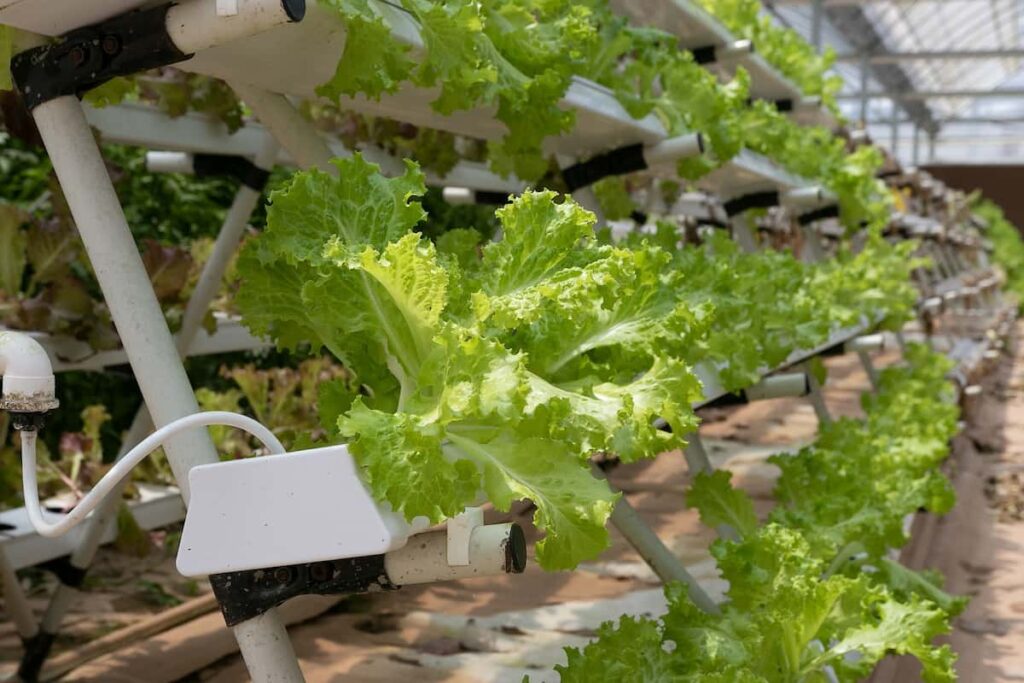
Hydroponic plant care
Choose the suitable growing medium
Another essential factor to consider when starting with hydroponic farming is your growing medium. There are many growing mediums on the market, and choosing one specifically designed for hydroponics is important. Some popular options include coco coir, vermiculite, and perlite. Make sure to read the product instructions carefully before beginning your project.
Fertilize regularly
One of the most critical aspects of hydroponic farming is constantly fertilizing your plants. This means adding nutrients directly to the water in which your plants are growing. One popular option for fertilizing hydroponically grown crops is an organic fertilizer made from plant extracts and minerals. Once you have chosen a fertilizer that suits your garden, follow the product instructions closely.
Mulch heavily
One of the best methods to protect your plants from harsh weather conditions and promote healthy growth is by mulching them generously every day.
Hydroponic farming problems
- One major problem with hydroponic farming is that it is difficult to maintain crops in a controlled environment. The systems used to circulate water around the plants are delicate and can be easily disrupted if not correctly maintained. This can lead to poor crop yields and overcrowded plants. Additionally, hydroponic farms often require more nutrients than traditional farms, which can be difficult to obtain in deficient soil resources. Finally, hydroponic farms are susceptible to pests and diseases, which can be difficult to control without proper sanitation facilities.
- Despite these problems, hydroponic farming has been popular recently due to its many benefits. In particular, hydroponic farming is ideal for areas where soil resources are limited or non-existent or environmental impact is a concern. While there are still some challenges that need to be overcome before this form of agriculture becomes widespread, it appears that it has great potential for growth in the future.
In case you missed it: Low-Cost Hydroponic Farming with Automation: How to Set Up, Cost Effective Tips, and Ideas
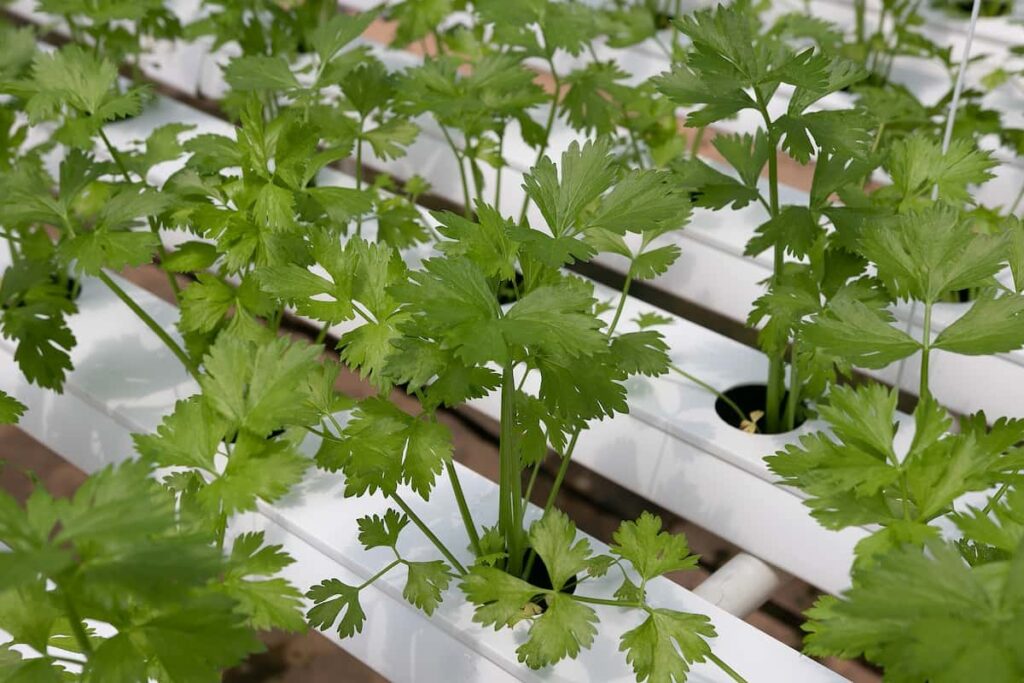
Profits from commercial hydroponic farming in South Africa
In South Africa, the profits from commercial hydroponic farming are enough to pay for overhead expenses. Some people even provide reasonable wages for farmworkers if done right. An acre of land can reportedly yield an average of $230,000 and $270,000 annually compared to traditional agriculture, which yields between $25,000 and $35,000 per annum.
Conclusion
In South Africa, hydroponic farming is becoming increasingly popular due to the country’s hot climate and limited land availability. In addition, this type of agriculture is also environmentally friendly, as it doesn’t require the use of pesticides or fertilizer. Today, hydroponic farming is becoming more popular in South Africa as it offers several benefits over traditional farming methods.
- How to Make Houseplants Bushy: Effective Tips and Ideas
- Innovative Strategies for Boosting Coconut Pollination and Yield
- Pollination Strategies for Maximum Pumpkin Yield
- The Complete Guide to Chicken Fattening: Strategies for Maximum Growth
- Natural Solutions for Tulip Problems: 100% Effective Remedies for Leaf and Bulb-Related Issues
- Revolutionizing Citrus Preservation: Towards a Healthier, Greener Future
- Natural Solutions for Peony Leaf and Flower Problems: 100% Effective Remedies
- Maximizing Profits with Avocado Contract Farming in India: A Comprehensive Guide
- Natural Solutions for Hydrangea Problems: 100% Effective Remedies for Leaf and Flowers
- The Ultimate Guide to Choosing the Perfect Foliage Friend: Bringing Life Indoors
- From Sunlight to Sustainability: 15 Ways to Use Solar Technology in Agriculture
- The Ultimate Guide to Dong Tao Chicken: Exploring from History to Raising
- The Eco-Friendly Makeover: How to Convert Your Unused Swimming Pool into a Fish Pond
- Mastering the Art of Delaware Chicken Farming: Essentials for Healthy Backyard Flocks
- 20 Best Homemade Fertilizers for Money Plant: DIY Recipes and Application Methods
- How to Craft a Comprehensive Free-Range Chicken Farming Business Plan
- Brighten Your Flock: Raising Easter Egger Chickens for Beauty and Bounty
- How to Optimize Your Poultry Egg Farm Business Plan with These Strategies
- Subsidy for Spirulina Cultivation: How Indian Government Schemes Encouraging Spirulina Farmers
- Ultimate Guide to Raising Dominique Chickens: Breeding, Feeding, Egg-Production, and Care
- Mastering the Art of Raising Jersey Giant Chickens: Care, Feeding, and More
- Ultimate Guide to Raising Legbar Chickens: Breeding, Farming Practices, Diet, Egg-Production
- How to Raise Welsummer Chickens: A Comprehensive Guide for Beginners
- How to Protect Indoor Plants in Winter: A Comprehensive Guide
- Ultimate Guide to Grow Bag Gardening: Tips, Tricks, and Planting Ideas for Urban Gardeners
- Guide to Lotus Cultivation: How to Propagate, Plant, Grow, Care, Cost, and Profit
- Agriculture Drone Subsidy Scheme: Government Kisan Subsidy, License, and How to Apply Online
- Ultimate Guide to Raising Araucana Chickens: Breed Profile, Farming Economics, Diet, and Care
- Bringing Hydroponics to Classroom: Importance, Benefits of Learning for School Students
- Ultimate Guide to Raising Polish Chickens: Breed Profile, Farming Economics, Diet, and Care
- Ultimate Guide to Raising Australorp Chickens: Profile, Farming Economics, Egg Production, Diet, and Care
- Silkie Chicken Farming: Raising Practices, Varieties, Egg Production, Diet, and Care
- Sussex Chicken Farming: Raising Practices, Varieties, Egg Production, Diet and Care
- Homemade Feed Formulations for Livestock: Discover Cost-effective Starter to Finisher Feed Recipes
- 20 Best Pig Weight Gain Supplements: Top Swine Weight Gain Formulas
- Ultimate Guide to Elderberry Farming: Propagation, Planting, Yield, Cost, and Profit